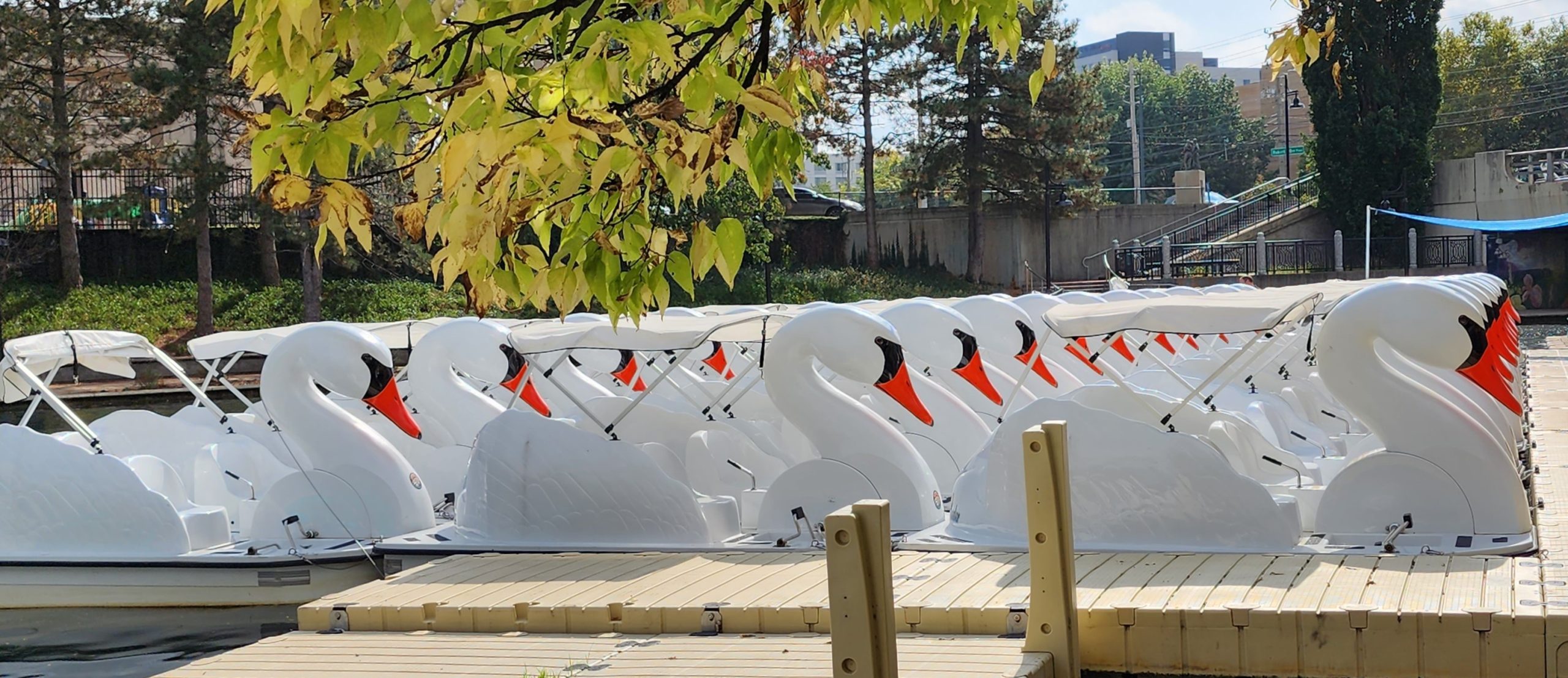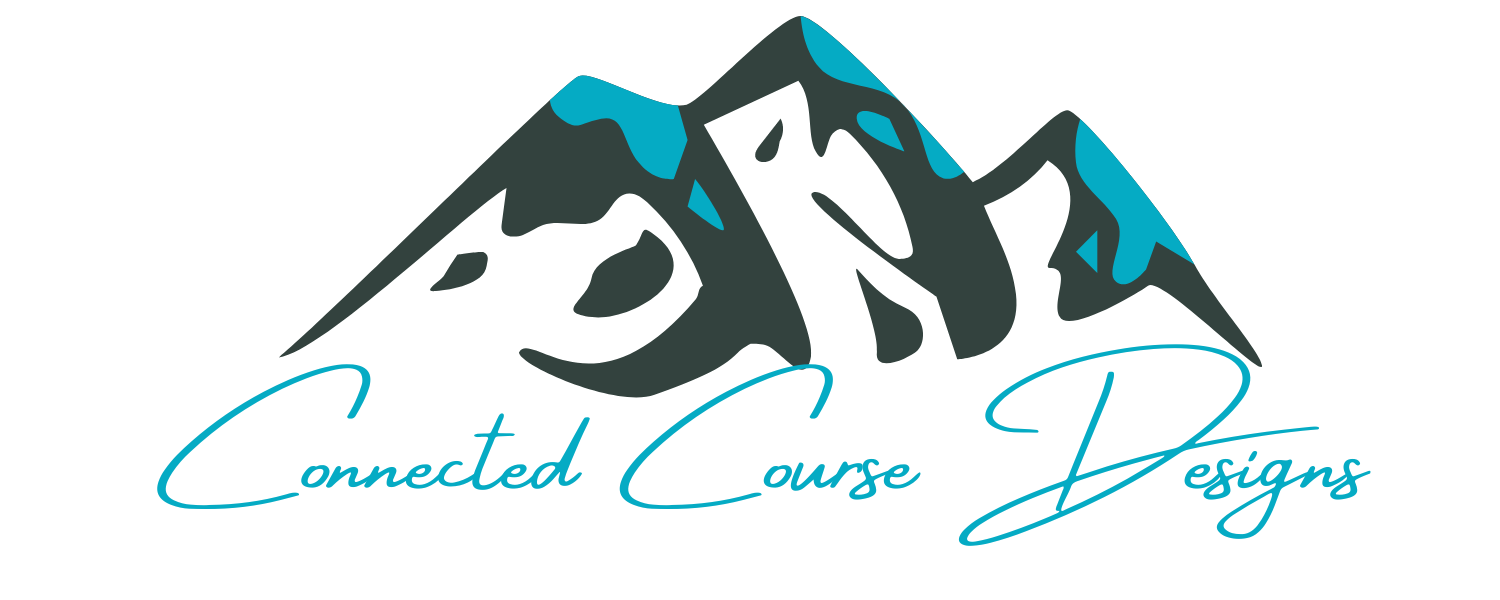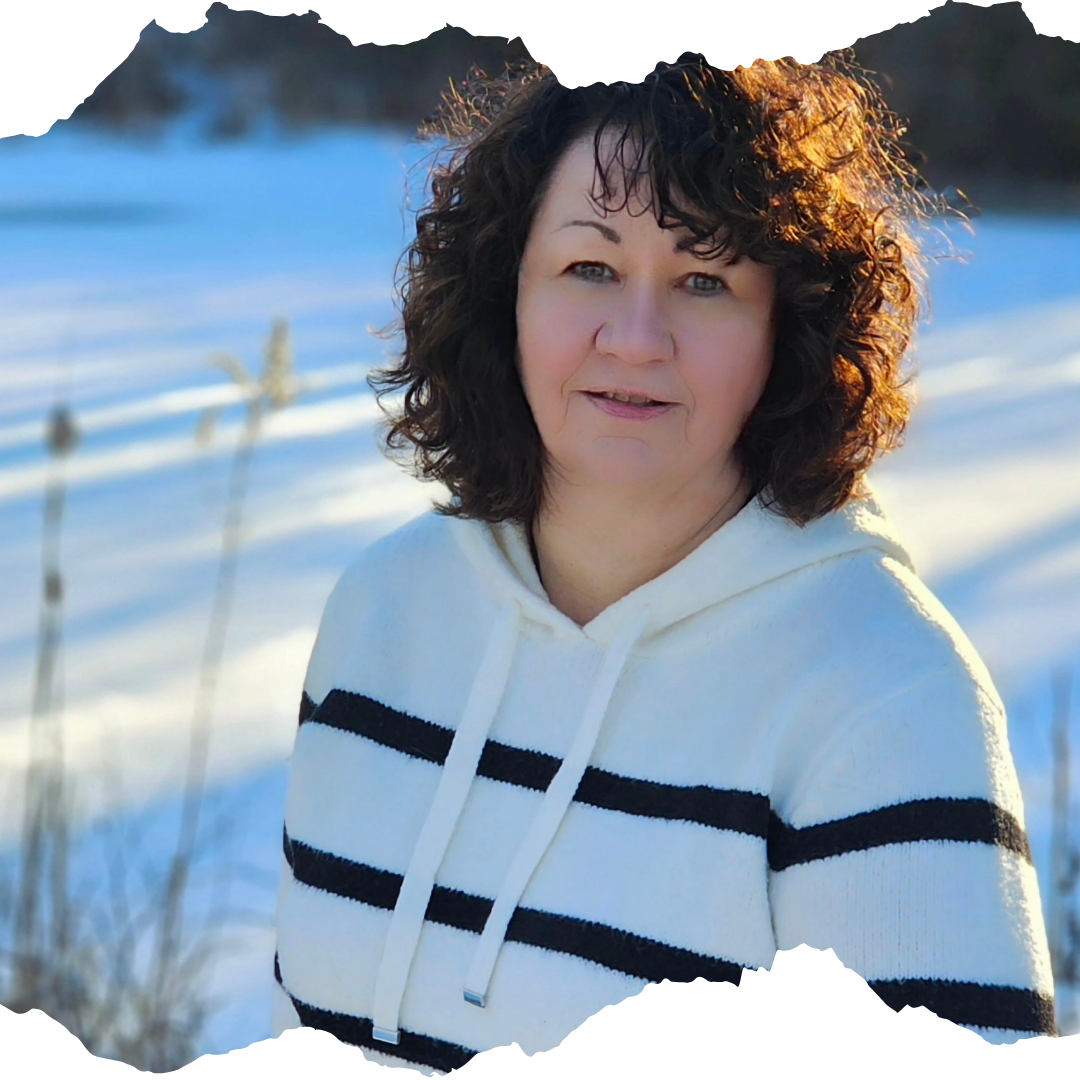
Swan paddle boats all lined up in rows waiting to be rented for use on the Indianapolis downtown canal. make a great b-roll image.
Walking along the canal in the middle of downtown Indianapolis, I pulled out my phone and started snapping shots. My only criteria was that the subject of the photos were interesting to me – flowers, the war memorial slabs, the historic clock, and parked swan paddle boats. I felt creative and accomplished.
This was Day 1 of Mighty Easy Video Camp taught by Jennifer Burke of Mighty Mojo Marketing. The reason I felt productive that day was I had a clear, achievable goal – have fun taking photos of anything that seemed interesting.

B-roll of the canal walk in downtown Indianapolis
Before we examine the second most important question for course creators, let’s take a moment to review the most important question: What is the end goal your learners need to be able to do? I call this a learner destination goal, and you can read more about it in my blog post on the most important question for content creators.
Jennifer clearly communicated the summit goal of Mighty Easy Video Camp: Creating easy, short, social videos. By the end of the 5-day camp, we’d have a minimum of 5 completed and posted social media videos, and it would be easy.
Supporting goal trail markers
Once you have identified your summit goal, the next step is to craft supporting goals.
This is the second-most important question for course creators:
What smaller, achievable goals support the summit goal?
Think of these supporting goals like trail markers long the trail to the summit.
Trail markers serve several purposes:
- They let you know where you are and where you are headed next on your journey.
- As you pass each one, it lets you know you are getting closer to a summit.
- Some sections of the trail may be more difficult than others; yet, each section builds on the next and remains doable.
Let’s look at each of these as they relate to creating supporting course goals for your learners.
Clear trail markers show progress
A helpful trail marker has clear markings that let you know when you have reached a certain point on the trail leading to a summit. It tells you where you are, how far you have yet to go to the summit, and the direction to head. Keep this in mind when creating supporting goals.
Jennifer provided us with these trail markers when we signed up for the video camp. We were given 5 goals, one for each day:
- Gathering b-roll
- Using b-roll to create our first post(s)
- Using Canva templates to create posts
- Putting our face on a post
- Talking on camera
The number one job of supporting goals (trail markers) is to lead your learners to the summit goal. Ask yourself: “Will meeting these goals support the learner in achieving the final summit goal?”
Our summit goal of creating and publishing 5 posts in 5 days, started with gathering the content, b-roll. (B-roll is a film term for supplemental footage; it can be thought of as background to the main film or social media post.)
The hallmark of a good supporting goal is you know whether you have achieved it or not. If you gathered b-roll on day one, goal met! If you used Canva on day three to create a post, goal met! Talking on camera, goal met!

B-roll of the Indianapolis J.W. Marriot hotel from the canal walk.
A trail that gets incrementally closer to the summit
When learners succeed with smaller goals, they gain confidence to attempt the next goal, all the way to the summit.
Taking pictures was a very easy goal to meet. Putting oneself on camera though was difficult due to the issues of technology, logistics, and self-consciousness. If Jennifer had started learners with that, many would have given up before even attempting to make a post.
She created the course with incremental steps built on one another, bringing us closer to our summit goal. The course outline provided 5 trail markers, each another skill needed to meet the summit goal of 5 final posts.
I had created an Instagram account years ago, but I’d never made a single post. I could see how the steps Jennifer outlined, taking us step by step from one trail marker to the next, would lead to 5 posts in 5 days.
Learner research shows that when learners achieve small goals, they gain confidence, feel motivated, and are prepared to succeed on the larger, end goal of a course.
A challenging, hikable trail
If you’ve ever hiked a trail with a steep ascent, you probably encountered what are called switchbacks. This is where the trail goes across the elevation, leading you up just a little higher and then switches back the other direction, leading you across the elevation again slanting up. The grade at which the trail slants up is kept at a doable angle. Going straight up a trail at a 50% grade is nearly impossible (especially over distance), while zig-zagging across, getting higher with each zig and each zag, covers more distance, but is achievable.
Supporting goals need to be like that. They should be a little difficult (like the uphill grade of a switchback) but not so demanding they are out of reach for the learner (like trying to hike up a 50% grade). They should stretch the learner’s ability.
Research shows when learners are not challenged, they tend to lose motivation and not complete a course. If they are over-challenged, they may also give up due to frustration. That’s why each trail marker should mark a goal that has elements of difficulty as it leads to the summit.
Jennifer’s Mighty Easy Video Camp did this well. She gave us the tools we needed before we were asked to create a talking-on-camera post, such that reaching each trail marker moved us closer to that goal. By the time we got to the talking-on-camera post, we already knew how to gather good b-roll photos, post on the app, leverage a template in Canva, and use video – each with their own elements of complexity.
The only hurdle remaining was overcoming being uncomfortable being on camera – which was perhaps the most difficult of all the tasks. Now armed with several successful posts already published, we were close enough to the summit to see it. We weren’t giving up now! We had our confidence built up and were fully ready to succeed and be proud of our accomplishments.
Reaching the summit
We successfully reached the summit of 5 published posts because the video camp daily tasks met the three criteria for supporting goals:
- Let us know where we were and where we were headed
- Progressed incrementally
- Were challenging - but not too challenging
If you’d like to see my posts (be kind; I’m still new at social media shorts), you can check out my Instagram channel.
If you’d like to be a camper in one of Jennifer Burke’s video camps, watch her Mighty Marketing Mojo website for the next opportunity. You can also purchase immediate access to the recorded sessions of previous camps.


As someone who participated in this challenge, this was an excellent summary of our challenge. I did indeed achieve my goals, although I had quite a few setbacks while doing them. Jennifer was an excellent instructor.